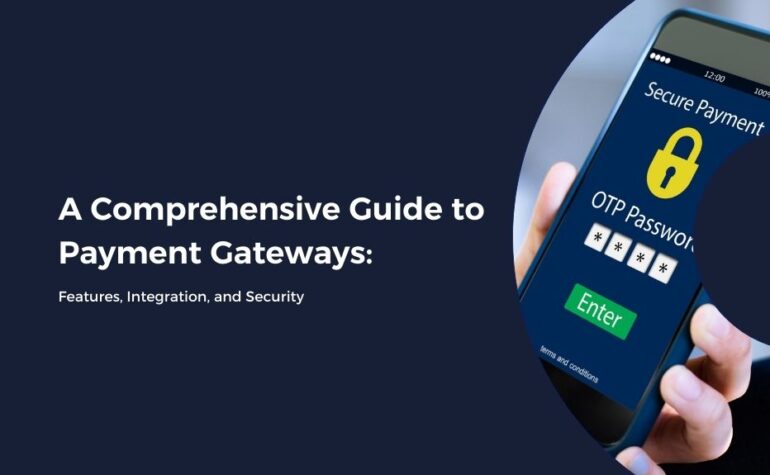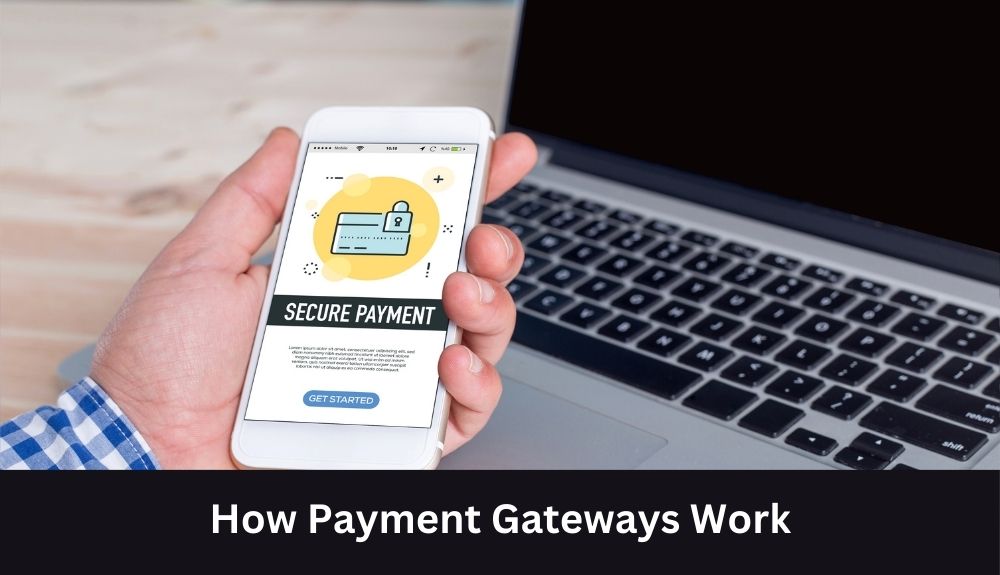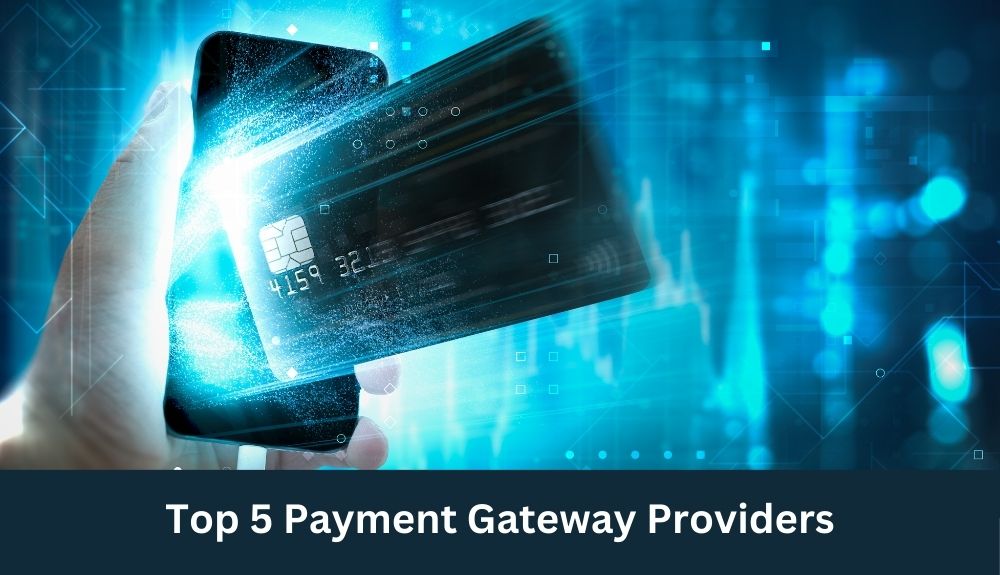Best Credit Card Processing Solutions Tailored for Every Industry

By merchantservices February 3, 2024
Are you ready to unlock the full potential of seamless payment transactions? In today’s digital era, payment gateways have become the backbone of any online business, ensuring a secure transfer of payment data and providing a consistent user experience. But what exactly are payment gateways and how do they work?
In this comprehensive guide to payment gateways, we explore the features, integration methods, and security considerations that every business owner should know. Whether you’re a startup or an established online merchant, understanding the intricacies of payment integration is crucial for your business trajectory.
Throughout this blog, we will delve into the various types of payment systems, compare payment processors, and analyze the fee structures associated with different payment methods. We will also discuss best practices for customization options, PCI DSS compliance, and how to provide a seamless user experience for your customers.
Join us on this journey as we uncover the secrets of payment gateway integration and empower your business with the knowledge needed to navigate the evolving landscape of online transactions. Get ready to take your payment experience to new heights!
Introduction to Payment Gateways
In the digital age, payment gateways have become the backbone of any online business. These secure platforms facilitate the transfer of sensitive payment information between buyers and sellers, ensuring seamless transactions and a consistent user experience. By securely authorizing, encrypting, and transmitting payment details, payment gateways enable online merchants to accept various payment methods, such as credit cards and debit cards.
The importance of payment gateways cannot be overstated. They provide a crucial link in the universe of online transactions, allowing businesses to cater to a global audience and offer a cohesive customer journey. During peak periods or high transaction volumes, payment gateways ensure a seamless user experience without compromising security. Moreover, payment gateways adhere to Payment Card Industry Data Security Standard (PCI DSS) guidelines, safeguarding sensitive financial data of both buyers and sellers.
The key features and benefits of payment gateways include:
1. Secure Transfer of Payment Data: Payment gateways protect the transmission of sensitive payment information, reducing the risk of data breaches and fraud.
2. Customization Options: Some payment gateways offer customization features to align with a business’s specific needs, branding, and website design.
3. Technical Support: Reliable payment gateways provide 24/7 customer support, assisting businesses in resolving any technical issues promptly.
4. International Support: Payment gateways often support multiple currencies, allowing businesses to cater to customers globally without additional charges or complications.
5. Scalable Gateway Solutions: With payment gateways, businesses can handle varying transaction volumes and scale their operations seamlessly.
In conclusion, payment gateways play a vital role in ensuring secure and efficient online transactions. By choosing the right payment gateway solution and integrating it seamlessly into their business operations, online merchants can unlock the full potential of payment gateway integration and pave their way to successful business trajectories.
What is a Payment Gateway?
In the world of online transactions, payment gateways play a crucial role in ensuring secure and seamless payment processes. A payment gateway is a technology that enables the transfer of payment data securely between the merchant’s website and the acquiring bank, allowing customers to make payments using various payment methods such as credit cards, debit cards, or digital wallets[^1^].
Differentiating Payment Gateways from Payment Processors
While payment gateways and payment processors are closely intertwined, they serve distinct purposes in the payment ecosystem. Payment processors handle the authorization and settlement of transactions, working behind the scenes to securely transfer funds between the customer’s account and the merchant’s account[^1^]. On the other hand, payment gateways focus on the secure transfer of payment data between the customer, the merchant’s website, and the payment processor[^2^].
The Role of Payment Gateways in Facilitating Online Transactions
Payment gateways act as the intermediary between the customer, the merchant, and the acquiring bank, ensuring the smooth flow of payment information. When a customer initiates a payment on an e-commerce platform, the payment gateway encrypts the sensitive payment data and securely transmits it to the acquiring bank for authorization. If approved, the payment gateway facilitates the transfer of funds from the customer’s account to the merchant’s account[^3^].
By providing robust security measures, payment gateways safeguard the transmission of sensitive financial data during the various phases of the transaction process[^4^]. This includes encrypting payment details, securing the authorization request and response, and complying with industry standards such as the Payment Card Industry Data Security Standard (PCI DSS)[^5^].
In summary, payment gateways are the backbone of any online business, ensuring the secure transfer of payment data, providing customers with various payment options, and enabling a consistent user experience. Understanding the intricacies of payment gateway integration is crucial for businesses looking to optimize their payment transactions and provide a seamless user experience[^6^].
Types of Payment Gateways
When it comes to payment gateways, there are several types available, each with its own set of functionalities and use cases. Understanding these different types can help businesses choose the right payment gateway solution for their specific needs.
1. Hosted Payment Gateways: These gateways redirect customers to a third-party payment page where the transaction is processed. The advantage of hosted gateways is that they handle the entire payment process, including security, while providing a seamless user experience. This type of gateway is ideal for businesses that prioritize convenience and ease of integration.
2. Self-Hosted Payment Gateways: With self-hosted gateways, the payment page is hosted on the merchant’s website itself. This offers more control over the user experience and branding, but also requires additional security measures, as the merchant is responsible for handling sensitive customer data.
3. API/Non-Hosted Payment Gateways: API or non-hosted gateways allow businesses to create their own customized payment pages and have full control over the payment process. This type of gateway is suitable for businesses with specific requirements and technical expertise to build and maintain their own payment infrastructure.
4. Custom Payment Gateways: For businesses with unique needs, custom payment gateways provide the flexibility to create a tailor-made solution. These gateways are often built from scratch or by customizing existing solutions to meet specific business requirements.
The choice of payment gateway depends on factors such as the level of control, security requirements, ease of integration, and scalability needed for your business. It’s important to evaluate these options carefully to select the most suitable payment gateway for your specific needs.
How Payment Gateways Work

Payment gateways play a vital role in facilitating secure online transactions. Understanding how payment gateways work is essential for businesses looking to integrate them into their websites or e-commerce platforms. This section will provide a step-by-step overview of the payment gateway process, from the moment a customer finalizes a purchase to the confirmation and fund transfer.
Step 1: Customer Initiates Payment
The payment process begins when the customer reaches the checkout page and decides to make a purchase. They select their preferred payment method, such as a credit card, debit card, or digital wallet, and provide the necessary details.
Step 2: Encryption and Authorization
Once the customer submits their payment information, the payment gateway encrypts the data to ensure its security during transmission. The gateway then sends an authorization request to the respective issuing bank or financial institution to verify the validity of the payment method and the availability of funds.
Step 3: Authorization Response
The issuing bank or financial institution receives the authorization request and evaluates it based on factors like the customer’s account balance, credit limit, and any risk or fraud detection measures. After processing the request, the bank sends an authorization response to the payment gateway, indicating whether the payment is approved or declined.
Step 4: Confirmation and Fund Transfer
If the authorization response is positive, the payment gateway informs the merchant that the transaction is approved. The customer receives a confirmation message, assuring them that their payment was successful. Simultaneously, the payment gateway initiates the transfer of funds between the customer’s account and the merchant’s account. This process ensures a seamless and secure transfer of payment data.
Throughout the payment gateway transaction process, several safeguards and security measures protect sensitive financial data. Payment gateways adhere to industry standards, such as the Payment Card Industry Data Security Standard (PCI DSS), to maintain the highest level of transaction security.
By following these steps, payment gateways enable businesses to offer their customers a secure and convenient way to make online purchases. It is crucial for merchants to select a reliable and scalable gateway that meets their specific requirements, ensuring a consistent user experience and mitigating any technical issues that may arise.
With a deep understanding of how payment gateways work, businesses can unlock their full potential by providing a seamless payment transaction experience to their customers, ultimately enhancing their business trajectory and fostering customer trust and loyalty.
Benefits of Integrated Payment Solutions
Integrated payment solutions offer numerous advantages for businesses seeking to optimize their payment processes. By leveraging the capabilities of an integrated payment gateway, businesses can enhance their checkout experience, improve security measures, and expedite payment processing, resulting in increased customer satisfaction and streamlined operations. Here are some key benefits:
Streamlined Checkout Processes
Integrated payment solutions simplify the payment process for customers, reducing friction and enhancing the overall user experience. With a seamless integration between the merchant’s website and the payment gateway, customers can complete their transactions quickly and smoothly, resulting in higher conversion rates and reduced cart abandonment.
Enhanced User Experience
By providing a cohesive customer journey, integrated payment solutions contribute to a consistent and user-friendly checkout experience. With features like saved card information, one-click payments, and customizable checkout pages, businesses can create a frictionless and convenient payment experience that encourages repeat business.
Increased Security
Integrated payment solutions prioritize security measures to protect sensitive payment information. They ensure compliance with industry standards, such as PCI DSS (Payment Card Industry Data Security Standard), and employ encryption protocols to safeguard transactions. By instilling trust in customers, businesses can mitigate the risk of fraudulent activities and enhance their reputation.
Faster Payment Processing
Integrated payment solutions enable faster payment processing by automating authorization requests and responses. With real-time transaction approvals, businesses can facilitate swift order fulfillment, providing a positive customer experience. Additionally, the integration eliminates manual reconciliation processes and allows for seamless tracking of payment status.
Seamless Integration
Integrated payment solutions offer ready-made integration options and provide APIs (Application Programming Interfaces) that enable businesses to integrate the payment gateway into their existing systems with ease. This eliminates the need for complex development work and reduces implementation time.
Reduced Cart Abandonment
A seamless and user-friendly payment process significantly reduces cart abandonment rates. By minimizing the steps required to complete a purchase and offering a variety of payment methods, businesses can capture more sales and boost revenue.
24/7 Customer Support
Many integrated payment solutions provide round-the-clock customer support to assist businesses with any payment-related inquiries or technical issues. This ensures that businesses can rely on prompt assistance, allowing them to resolve any issues swiftly and maintain uninterrupted payment transactions.
In summary, integrated payment solutions offer a range of benefits, including streamlined checkout processes, enhanced user experience, increased security, faster payment processing, seamless integration, reduced cart abandonment, and 24/7 customer support. By leveraging these advantages, businesses can unlock the full potential of payment gateway integration and propel their online operations to new heights.
Top 5 Payment Gateway Providers

When it comes to payment gateway integration, choosing the right provider is crucial for a seamless transaction experience. Here are the top five payment gateway providers known for their reliability, security, and range of features:
1. Stripe
– Stripe is a popular choice for businesses of all sizes, offering flexible payment solutions and a developer-friendly platform.
– Key Features:
– Developer-friendly API for easy integration and customization.
– Advanced fraud protection tools to prevent fraudulent transactions.
– Extensive documentation and resources for seamless implementation.
– International support with multiple currency options.
2. Hotpay
– Hotpay is a rapidly growing payment gateway provider, known for its user-friendly interface and comprehensive set of features.
– Key Features:
– Customizable checkout options tailored to your brand.
– Easy setup and ready-made integrations with popular e-commerce platforms.
– Advanced fraud prevention measures to safeguard your transactions.
– Dedicated customer support available 24/7.
3. Square
– Square offers payment solutions designed specifically for small businesses, enabling them to accept payments online and in-person.
– Key Features:
– Seamless integration with Square’s point-of-sale systems and online store.
– Inventory management and sales analytics for better business insights.
– Contactless payments and digital invoicing options for convenience.
– Transparent fee structure with competitive rates.
4. PayPal
– PayPal is a well-established payment gateway provider that offers a range of services, including payment processing, money transfers, and online invoicing.
– Key Features:
– Trusted and widely recognized by customers worldwide.
– Easy integration with various e-commerce platforms.
– Robust fraud protection and buyer/seller protection policies.
– Dedicated mobile app for managing transactions on the go.
5. Adyen
– Adyen is a global payment gateway provider that specializes in offering a seamless payment experience across different channels and countries.
– Key Features:
– Wide range of local and international payment methods.
– Dynamic routing to ensure the highest transaction success rate.
– Advanced reporting and analytics tools to optimize payment performance.
– Customizable checkout for a consistent user experience.
Remember, when selecting a payment gateway provider, consider factors such as your business trajectory, transaction volume, security concerns, and customer support. By choosing one of these top providers, you can ensure a reliable and secure payment integration that supports your business’s growth and enhances the payment experience for your customers.
How to Set Up Swift Payment Integration: Openkoda Case Study
Openkoda’s successful payment gateway integration serves as a valuable case study for businesses looking to streamline their payment processes. The following steps and key considerations were crucial in ensuring a smooth implementation:
Step 1: Define Objectives and Requirements
Before diving into payment gateway integration, Openkoda clearly defined its objectives and requirements. This involved assessing their target audience, transaction volume projection, preferred payment methods, and desired features for a seamless user experience.
Step 2: Research and Select the Ideal Payment Gateway Provider
Openkoda conducted a thorough evaluation of various payment gateway providers, considering factors like security, reliability, customization options, pricing structures, and technical support. Ultimately, they chose a provider that aligned with their specific needs.
Step 3: Configure and Customize the Integration
Openkoda collaborated closely with their chosen payment gateway provider to configure the integration. They customized the payment gateway to match their brand’s look and feel, ensuring a cohesive customer journey. This involved implementing secure transfer of payment data and utilizing the provider’s provided API for ready-made integration.
Step 4: Test and Optimize the Integration
Extensive testing was conducted to ensure the payment gateway integration met Openkoda’s specifications. They rigorously tested payment processing, invoice generation, refund functionality, and error handling. Any technical issues or discrepancies were promptly addressed to guarantee a seamless user experience.
Openkoda’s successful implementation of payment gateway integration highlights the importance of careful planning, research, and collaboration. By following these steps and considering the key factors mentioned, businesses can effectively integrate a payment gateway and elevate their online payment experience.
Conclusion
In this comprehensive guide, we have explored the world of payment gateways, their features, integration methods, and security considerations. Now, let’s summarize the key points discussed and emphasize the importance of making the right choices for a seamless payment experience.
1. Choose the Right Payment Gateway: When selecting a payment gateway, consider factors such as transaction fees, security measures, customization options, and international support. Look for a scalable gateway that aligns with your business trajectory and provides efficient payment processing.
2. Ensure a Seamless Payment Experience: A cohesive customer journey is crucial for successful transactions. Optimize your checkout process by offering a user-friendly and secure payment gateway. Remember to prioritize consistent user experience across devices and peak periods.
3. Prioritize Security: The secure transfer of payment data is the backbone of any online business. Ensure your chosen payment gateway complies with industry standards such as PCI DSS. Look for features like payment encryption, customer authentication, and fraud prevention measures to safeguard sensitive financial data.
4. Customer Support: Reliable customer support is essential for resolving technical issues and providing assistance during integration. Choose a payment gateway that offers responsive, 24/7 customer support to address any concerns that may arise.
By following best practices and leveraging the features of an integrated payment solution, you can streamline your payment transactions, enhance user experience, and boost the overall success of your online business.
Remember, selecting the right payment gateway is a crucial factor in achieving a seamless payment experience for your customers. Take the time to evaluate your options, considering the specific requirements of your business, and make an informed decision that aligns with your goals.
Choose the right payment gateway, prioritize security, and offer a seamless payment experience to unlock the full potential of payment gateway integration for your business.
If you’d like more in-depth information and guidance, feel free to explore the preceding sections of this guide. Happy integrating!
